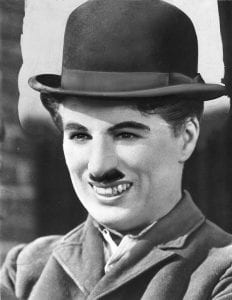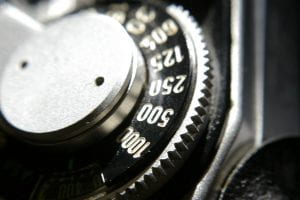
The 1930s: The Great American Movie Genres…
- Her Dilemma (a.k.a. Confessions of a Co-Ed) (1931) dir. Dudley Murphy – Picture became secondary, since sound was new, and more important. Scene was shot with 2 cameras at the same time for audio’s sake. The lighting was flatter. Cinema became far less cinematic.
- Love Me Tonight (1932) dir. Rouben Mamoulian – Utilized the new possibilities of sound. Used everyday noises as music. Had a single song from a single person turn into a marching song from soldiers, to fiddle music, to the ears of a princess. It was a metaphor for travel, sound is a thing that cinema follows. He mocked old ladies by putting the sounds of yapping dogs over them.
- The Golem: How He Came into the World (1920) dir. Carl Boese and Paul Wegener – Horror movie, used diagonal expressions. The Golem was made out of clay.
- Frankenstein (1931) dir. James Whale – Borrowed heavily from The Golem. Altered original idea, by having Frankenstein barely speak, where in the book, he speaks a lot.
- Eyes Without a Face (1960) dir. Georges Franju – Utilized a mask to make a person seem emotionless.
- Audition (1999) dir. Takashi Miike – Uses shock as a scare mechanism.
- The Public Enemy (1931) dir. William A. Wellman – One of the first great Gangster Films. Many organizations denounced the film for indulgent “gangster charm”
- Scarface (1932) dir. Howard Hawks and Richard Rosson – Turned the Gangster genre into Greek Tragedy. They thickened Paul Muni’s eyebrows to make him look more ape-like.
- Scarface (1983) dir. Brian De Palma – Utilized crane shots. Charmed well with popular culture at the time with using upbeat music.
- Seven Samurai (1954) dir. Akira Kurosawa – Mixed gangster themes with samurai themes. Scenes with rain looked like they were drawn with charcoal.
- Once Upon a Time in America (1984) dir. Sergio Leone – One scene showed a dismay of the movie gangster, his fascism, victim hood, Hubris, style, and enigma.
- The Iron Horse (1924) dir. John Ford – Shows a lot about the Western genre. Western films are about landscape, instead of cityscape. Cameras move fast in chase scenes, whereas in gangster films, the camera is always static.
- My Darling Clementine (1946) dir. John Ford – Many of the best Westerns are about Lawmakers in an idealistic age. They symbolized virgin territory
- Twentieth Century (1934) dir. Howard Hawks – Comedy, which was the greatest genre in silent films changed course with sound. Also, the speed was faster.
- Bringing Up Baby (1938) dir. Howard Hawks – Took the speed of films with audio even further. A trend shows where the man is feeble, and idiotic, while the female is brassy, and talks back. This can even be seen in comedies today. Also, they made the apartment almost entirely white, so the characters stand out. Realism was added by having characters talk over each other.
- The Men Who Made the Movies: Howard Hawks (1973) dir. Richard Schickel – Showed Hawk’s character. He made movie icons that people still remember. One critic called him the greatest optimist that cinema has produced. Yet, one refers him as having one of the most bitter outlook on life.
- Gold Diggers of 1933 (1933) (introduced in Episode 1) dir. Mervyn LeRoy – Wanted to show a side of war that was unique, the marching songs, and their theatricality. Most Hollywood films take the perspective of a man, but a scene is included of a woman singing about the humiliation of the generations of men.
- Gertie the Dinosaur (1914) dir. Winsor McCay – An old version of a cartoon.
- The Adventures of Prince Achmed (1926) dir. Lotte Reiniger – Utilized Victorian cutout techniques to create an animation.
- Plane Crazy (1928) dir. Walt Disney and Ub Iwerks – Turned animation into an international art form.
- Snow White and the Seven Dwarfs (1937) dir. David Hand, William Cottrell, Wilfred Jackson, Larry Morey, Perce Pearce, and Ben Sharpsteen – Worldwide box office hit. Disney filmed a real actress and transcribed her into animation with single images. A use of motion capture.
- One Hundred and One Dalmatians (1961) dir. Clyde Geronimi, Hamilton Luske, and Wolfgang Reitherman – Utilized a cheaper form of animation, drawings were photocopied to film.
…And the Brilliance of European Film
- The Blood of a Poet (1931) dir. Jean Cocteau – Utilizes a lot of voices in a quiet scene for a shocking effect, not something that could be done with silent cinema. Influenced by Picasso. Utilized a scene with a set on its side.
- Inception (2010) dir. Christopher Nolan – Set was placed on a huge barrel, and spun around.
- Zéro de conduite (1933) dir. Jean Vigo – Appears to be snowing inside, yet it’s feathers in pillows, and utilized slow motion, and slow music.
- If…. (1968) dir. Lindsay Anderson – Inspired by “Zero de conduite”. Rather than buckets and books, these students had machine guns.
- L’Atalante (1934) dir. Jean Vigo – When filming, the set experienced snow midway through shooting, so they had the cameramen point upwards, so we see the sky, instead of the snow-covered ground. This was for continuity errors.
- Le Quai des brumes (1938) dir. Marcel Carné – Mist and dust can make the world that is being filmed look weary. Shot with diffusion on the lens. Defined the mood of France.
- Les Enfants du Paradis (1945) dir. Marcel Carné – Turns a street scene into a theater.
- La Règle du jeu (1939) (a.k.a. The Rules of the Game) dir. Jean Renoir – Inserted a morality quote that was important at the time it was released.
- La Grande Illusion (1937) dir. Jean Renoir – Most war films at the time had a side that was good or bad, yet Renoir saw good in both sides, portraying each character equally, with respect of both classes. He stopped his plot for a moment to discuss decency.
- Limite (1931) dir. Mário Peixoto – First surviving innovative movie. Directed by a 19 year old. Utilizes dissolve cutting.
- The Adventures of a Good Citizen (1937) dir. Stefan Themerson – First major contribution to film by Poland. Plays with light and exposure.
- Two Men and a Wardrobe (1958) dir. Roman Polanski – Inspired by Thermerson’s film.
- Das Blaue Licht (1932) dir. Leni Riefenstahl – Utilized soft lighting, mist, mountain landscapes, etc.
- Triumph of the Will (1935) dir. Leni Riefenstahl – A documentary of sorts, showed the army and Hitler in almost “mythic” terms. Images were geometric, euphoric, etc.
- Behind the Scenes of the Filming of the Olympic Games (1937) dir. Leni Riefenstahl – Attached cameras to balloons, and dug others into the ground, to get the at the same level of the athletes. Zoom lenses allowed closeups to be taken at a distance.
- Olympia Part Two: Festival of Beauty (1938) dir. Leni Riefenstahl – Utilized zooming to pick out details within the crowd, and cut before divers hit the ground, flipped them, slowed them down, etc. To make them look cinematic.
- Tiefland (1954) dir. Leni Riefenstahl – Utilizes glossy filming techniques, moody lighting, and a tracking shot.
- The Wonderful, Horrible Life of Leni Riefenstahl (1993) dir. Ray Müller – Shows that Riefenstahl never changed her style.
- Vertigo (1958) dir. Alfred Hitchcock – Camera becomes the eye of an actor. Utilized by filming through a windscreen.
- Saboteur (1942) dir. Alfred Hitchcock – Shows a story without telling it. i.e.: A man sets off a smoke detector, causing a sprinkler system to activate. In the scene, his clothes are wrinkled and wet, yet in the next cut you can see he’s drying them off, less wrinkled. Doesn’t utilize music during tense scenes, only whispers of voices. This was because lots of noise will distract the audience of small details, such as a sleeve being torn.
- Sabotage (1936) dir. Alfred Hitchcock – Utilizes heavy music, cuts, etc. for dramatic effect and shock. Also heavily utilizes foreshadowing. Fear comes from knowing that the shock will be coming.
- The 39 Steps (1935) dir. Alfred Hitchcock – Heavily utilized closeups. Not just of people’s faces, but of hands. “Closeups are crashes of cymbals, dramatic punctuation in a story.” Utilizes camerawork to show where the film takes place.
- Marnie (1964) dir. Alfred Hitchcock – “A high level shot is a tremolo.”
- Ninotchka (1939) dir. Ernst Lubitsch – Shows a character that lives in a grey reality.
- The Wizard of Oz (1939) dir. Victor Fleming – One scene is all sepia, then transitions into a colorful, saturated image, even the actress turns colorful. Starts off in reality, then turns into fantasy.
- Gone with the Wind (1939) (introduced in Episode 2) dir. Victor Fleming – Another example of escapism. Starts life in a fantasy world, then turns into a grey reality. Utilizes a far away “gods eye” shot.


